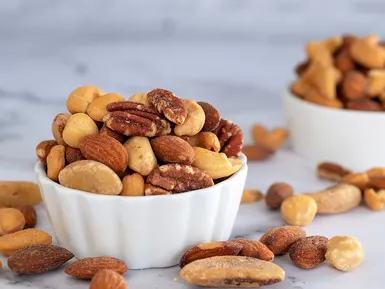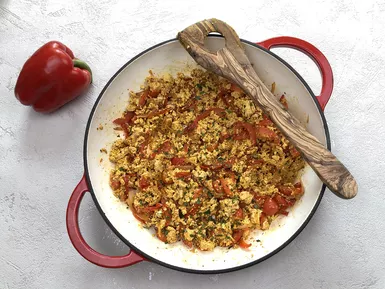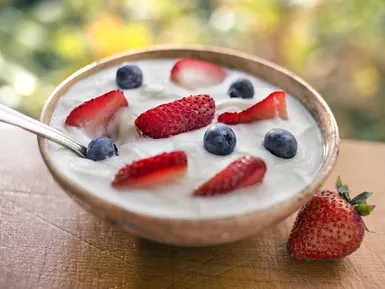
Introduction
Losing midriff fat can be a challenging journey for many women. However, with the right approach and understanding of the underlying principles, it is achievable. In this blog post, we will delve into the(physiology) and (psychology) of losing midriff fat and provide you with (scientific) and(sustainable) strategies to help you reach your goals.
The Physiology of Midriff Fat Loss
Energy Balance
At the core of losing midriff fat is understanding energy balance. To lose weight, you need to create a calorie deficit, meaning you consume fewer calories than your body burns. This can be achieved through a combination of (diet control) and (increased physical activity).
According to the NIH's Body Weight Planner, a general guideline is to aim for a calorie deficit of 500 - 1000 calories per day to lose 1 - 2 pounds per week. However, it's important to note that this is a general recommendation and individual needs may vary.
Hormone Regulation
Hormones play a crucial role in midriff fat storage and metabolism. For example, insulin, a hormone that regulates blood sugar levels, can also promote fat storage. When you consume a diet high in refined carbohydrates and sugars, your insulin levels spike, leading to increased fat storage in the midriff area.
On the other hand, hormones like cortisol, the stress hormone, can also contribute to midriff fat gain. Chronic stress can lead to elevated cortisol levels, which can increase appetite and promote fat storage in the abdomen.
Metabolic Adaptation
As you lose weight, your metabolism may slow down as your body tries to conserve energy. This is known as metabolic adaptation. To counteract this, it's important to include strength training in your exercise routine. Building muscle can increase your metabolic rate, helping you burn more calories even at rest.
The Psychology of Midriff Fat Loss
(Diet Behavior)
Our(diet behavior) is often influenced by a variety of factors, including emotions, habits, and social environment. For example, emotional eating, where we turn to food for comfort, can lead to overeating and weight gain.
To overcome emotional eating, it's important to identify your triggers and find alternative ways to cope with your emotions. This could include activities like exercise, meditation, or spending time with friends and family.
###(Emotional Eating)
(Emotional eating) is a common challenge for many people trying to lose weight. It's important to recognize that it's normal to have emotions, but it's not healthy to use food as a way to cope with them.
One strategy to overcome emotional eating is to practice mindfulness. Mindfulness involves being present in the moment and paying attention to your thoughts, feelings, and physical sensations without judgment. By practicing mindfulness, you can become more aware of your emotional triggers and make healthier choices.
Unique Insights for Midriff Fat Loss
(Tailoring Weight Loss Strategies to Different Metabolic Types or Lifestyles)
Not everyone has the same metabolic rate or lifestyle, so it's important to tailor your weight loss strategy to your individual needs. For example, if you have a slow metabolism, you may need to focus on increasing your physical activity and reducing your calorie intake more gradually.
On the other hand, if you have a fast metabolism, you may be able to eat more calories and still lose weight. However, it's important to make sure you're still eating a balanced diet and getting enough nutrients.
(Scientific Methods to Break Through Weight Loss Plateaus)
Weight loss plateaus are a common challenge for many people trying to lose weight. A weight loss plateau occurs when your body adapts to your new diet and exercise routine and stops losing weight.
To break through a weight loss plateau, it's important to make some changes to your diet and exercise routine. This could include increasing your physical activity, changing your exercise routine, or reducing your calorie intake further.
(The Importance of Non-Scale Victories)
When trying to lose weight, it's easy to focus solely on the number on the scale. However, it's important to remember that weight loss is not just about losing pounds. Non-scale victories, such as increased energy levels, improved sleep quality, and reduced stress, are also important indicators of progress.
By focusing on non-scale victories, you can stay motivated and celebrate your progress along the way.
Expert Tips for Midriff Fat Loss
###(Sample One-Day Weight Loss Meal Plan) A balanced diet is essential for losing midriff fat. Here's a sample one-day weight loss meal plan that provides approximately 1500 calories and is rich in nutrients:
Breakfast: Scrambled eggs with spinach and tomatoes, whole grain toast, and a glass of water.
Snack: Apple slices with almond butter.
Lunch: Grilled chicken salad with mixed greens, cucumbers, tomatoes, and a light vinaigrette dressing, and a glass of water.
Snack: Greek yogurt with berries and a sprinkle of granola.
Dinner: Baked salmon with roasted vegetables (broccoli, cauliflower, and carrots) and a side of brown rice, and a glass of water.
(Suggested Fat-Burning Exercise Combinations)
In addition to a balanced diet, regular exercise is also important for losing midriff fat. Here's a suggested fat-burning exercise combination that includes both cardiovascular exercise and strength training:
Cardiovascular Exercise: Aim for at least 150 minutes of moderate-intensity cardiovascular exercise per week, such as brisk walking, cycling, or swimming.
Strength Training: Include strength training exercises at least twice a week, such as squats, lunges, push-ups, and planks. These exercises can help build muscle and increase your metabolic rate.
(What to Do When You're Hungry During Weight Loss?)
It's normal to feel hungry during weight loss, especially in the beginning. However, it's important to make sure you're not overeating. Here are some tips to help you manage your hunger:
- Drink plenty of water. Sometimes, our bodies can mistake thirst for hunger.
- Eat foods that are high in fiber and protein. These foods can help you feel full and satisfied for longer.
- Plan your meals and snacks in advance. This can help you avoid making unhealthy food choices when you're hungry.
(How to Lose 10 Pounds Healthily and Quickly?)
Losing 10 pounds healthily and quickly requires a combination of a balanced diet and regular exercise. Here are some tips to help you achieve your goal:
- Create a calorie deficit. Aim to consume 500 - 1000 calories less than your body burns per day.
- Eat a balanced diet. Focus on eating plenty of fruits, vegetables, whole grains, lean proteins, and healthy fats.
- Include regular exercise in your routine. Aim for at least 150 minutes of moderate-intensity cardiovascular exercise per week, and strength training exercises at least twice a week.
- Get enough sleep. Lack of sleep can affect your metabolism and increase your appetite.
(Possible Challenges and Solutions During Weight Loss?)
Weight loss can be a challenging journey, and there are several challenges that you may encounter along the way. Here are some common challenges and solutions:
- Plateaus: As mentioned earlier, weight loss plateaus are a common challenge. To break through a plateau, try making some changes to your diet and exercise routine.
- Cravings: Cravings for unhealthy foods are normal, especially in the beginning. To overcome cravings, try finding healthy alternatives or distracting yourself with other activities.
- Social pressure: It can be difficult to stick to your diet and exercise routine when you're surrounded by people who are not supportive. To overcome social pressure, try finding a support group or a friend who can help you stay on track.
Conclusion
Losing midriff fat is a journey that requires patience, perseverance, and a commitment to a healthy lifestyle. By understanding the physiology and psychology of midriff fat loss, and by following the tips and strategies outlined in this blog post, you can achieve your weight loss goals and improve your overall health and well-being.
Call to Action
This week, start by making small changes to your diet and exercise routine. Try replacing high-calorie condiments with natural spices and herbs to add flavor to your meals without adding extra calories. Remember, every small step counts towards a healthier you!

5 Transformative Weight-Loss Resolutions for Success

Workout Routines & Beyond: Science-Based Weight Loss

Vitamin E and Weight Loss: Unveiling the Truth

Effective Strategies to Lose Midriff Fat for Women

8 Non-Scale Victories in Your Weight-Loss Journey

Unveiling the Ornish Diet: A Path to Sustainable Weight Loss

The Power of Social Support in Weight Loss

Personalized Weight Loss: 4 Strategies for Success

Long - Term Weight Loss: Maintaining Healthy Habits

